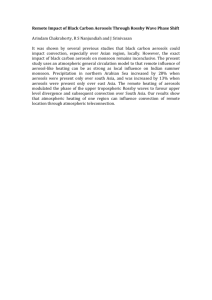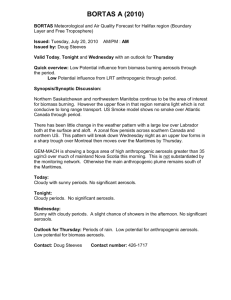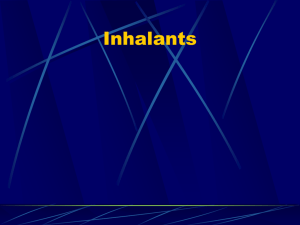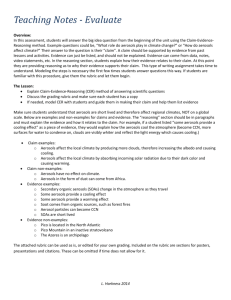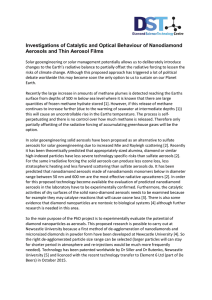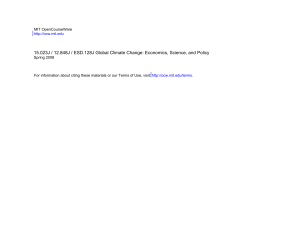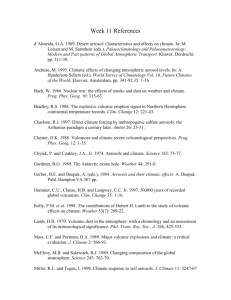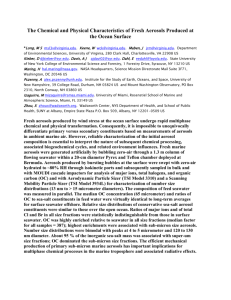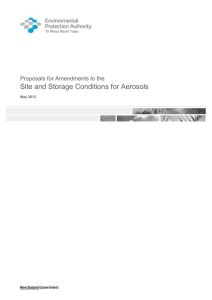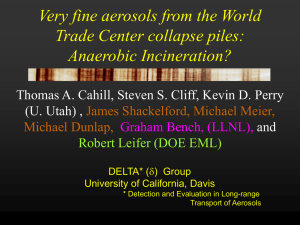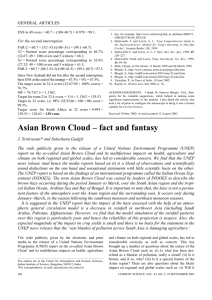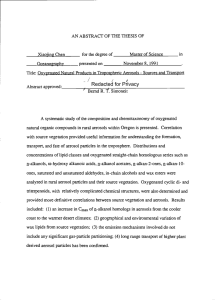Using Models and Measurements to Understand and Constrain the Direct... Aerosols on Climate
advertisement
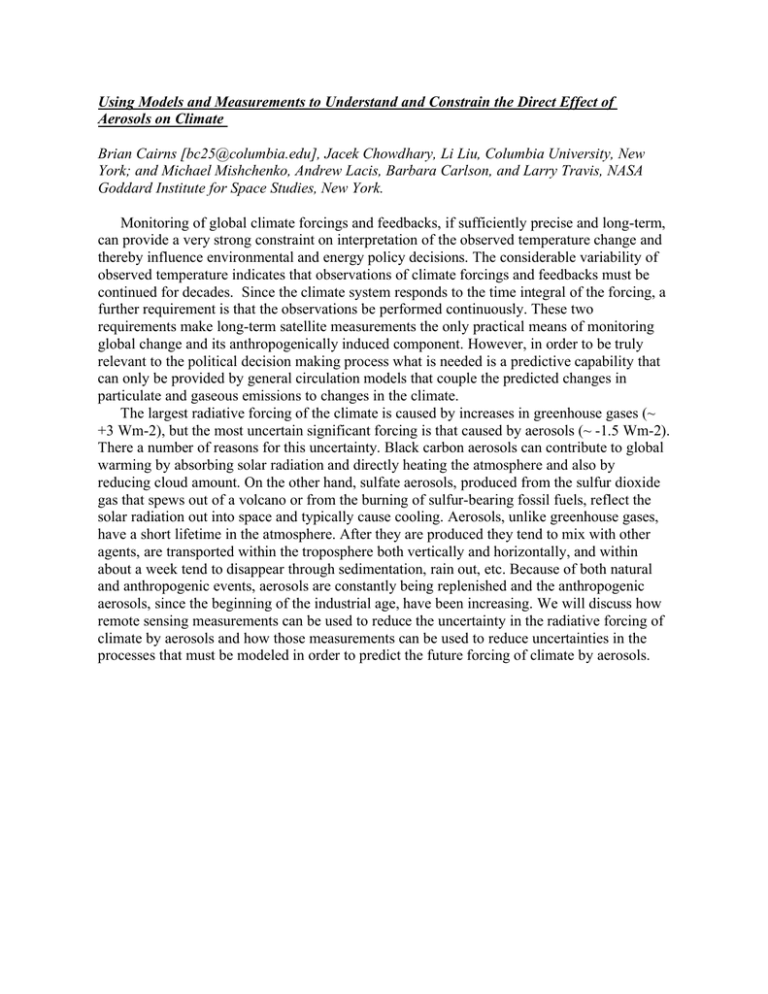
Using Models and Measurements to Understand and Constrain the Direct Effect of Aerosols on Climate Brian Cairns [bc25@columbia.edu], Jacek Chowdhary, Li Liu, Columbia University, New York; and Michael Mishchenko, Andrew Lacis, Barbara Carlson, and Larry Travis, NASA Goddard Institute for Space Studies, New York. Monitoring of global climate forcings and feedbacks, if sufficiently precise and long-term, can provide a very strong constraint on interpretation of the observed temperature change and thereby influence environmental and energy policy decisions. The considerable variability of observed temperature indicates that observations of climate forcings and feedbacks must be continued for decades. Since the climate system responds to the time integral of the forcing, a further requirement is that the observations be performed continuously. These two requirements make long-term satellite measurements the only practical means of monitoring global change and its anthropogenically induced component. However, in order to be truly relevant to the political decision making process what is needed is a predictive capability that can only be provided by general circulation models that couple the predicted changes in particulate and gaseous emissions to changes in the climate. The largest radiative forcing of the climate is caused by increases in greenhouse gases (~ +3 Wm-2), but the most uncertain significant forcing is that caused by aerosols (~ -1.5 Wm-2). There a number of reasons for this uncertainty. Black carbon aerosols can contribute to global warming by absorbing solar radiation and directly heating the atmosphere and also by reducing cloud amount. On the other hand, sulfate aerosols, produced from the sulfur dioxide gas that spews out of a volcano or from the burning of sulfur-bearing fossil fuels, reflect the solar radiation out into space and typically cause cooling. Aerosols, unlike greenhouse gases, have a short lifetime in the atmosphere. After they are produced they tend to mix with other agents, are transported within the troposphere both vertically and horizontally, and within about a week tend to disappear through sedimentation, rain out, etc. Because of both natural and anthropogenic events, aerosols are constantly being replenished and the anthropogenic aerosols, since the beginning of the industrial age, have been increasing. We will discuss how remote sensing measurements can be used to reduce the uncertainty in the radiative forcing of climate by aerosols and how those measurements can be used to reduce uncertainties in the processes that must be modeled in order to predict the future forcing of climate by aerosols.
